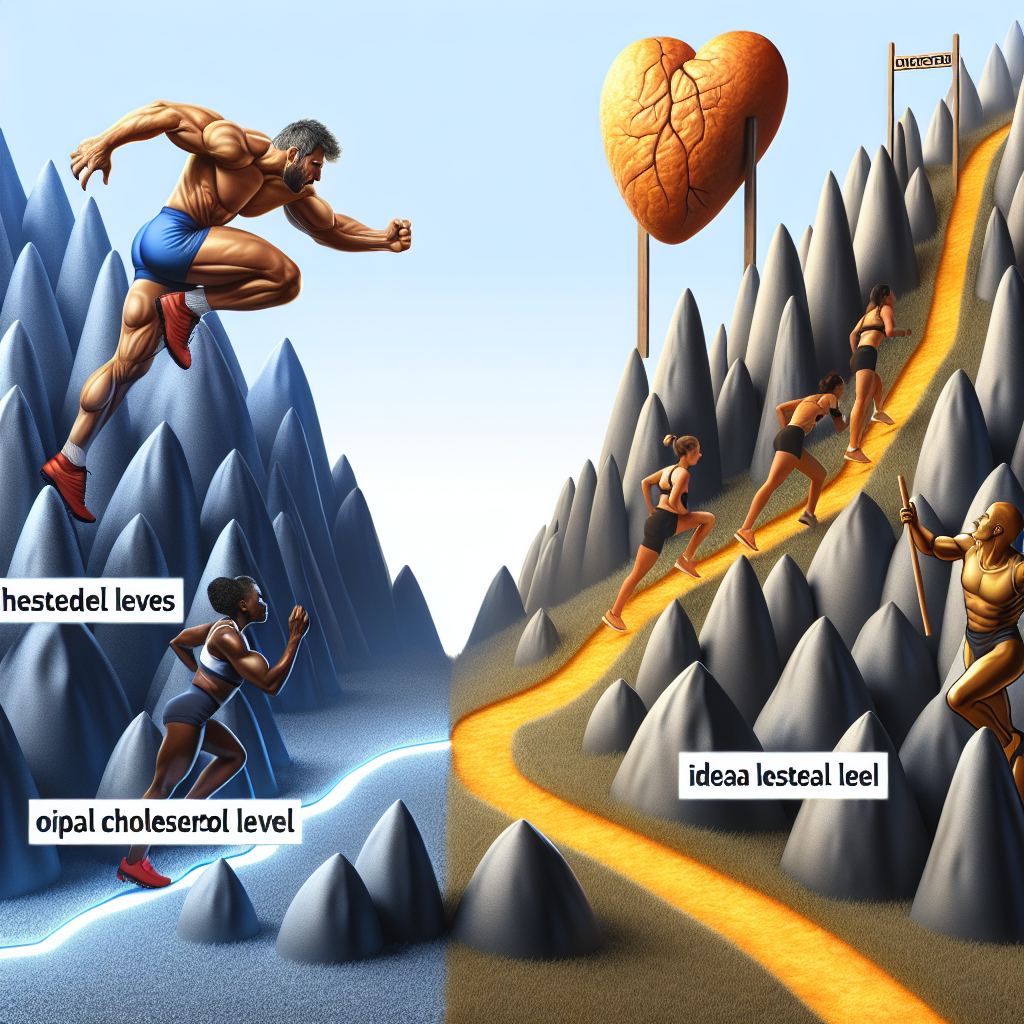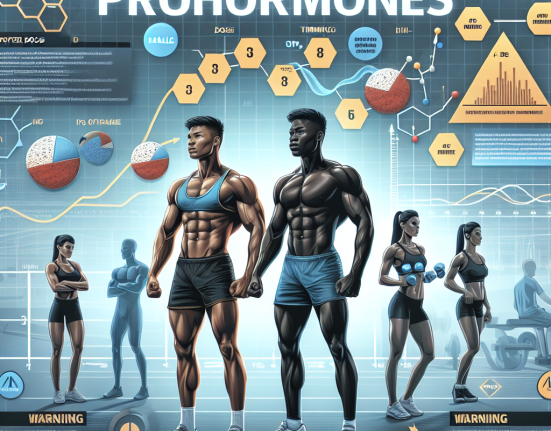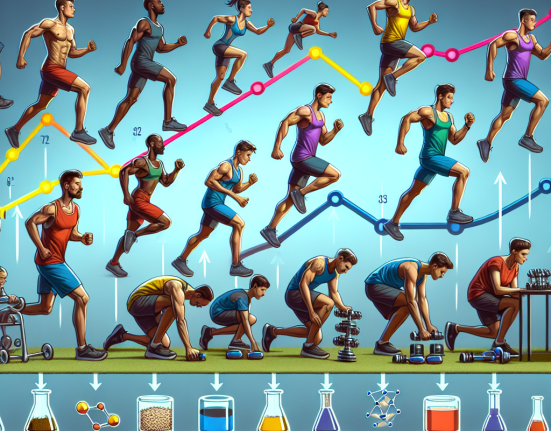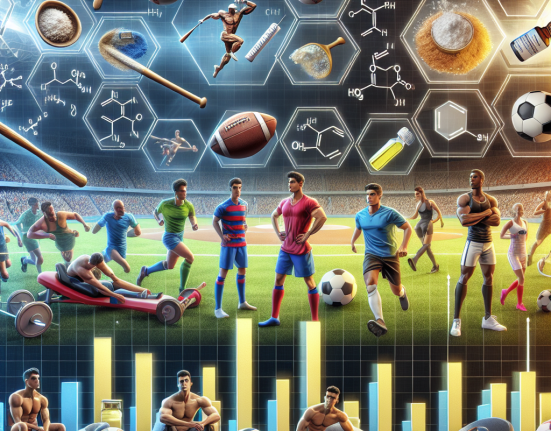-
Table of Contents
The Link Between Cholesterol Levels and Athletic Performance
Cholesterol is a waxy, fat-like substance that is found in all cells of the body. It is essential for the production of hormones, vitamin D, and bile acids, and plays a crucial role in maintaining the structure and function of cell membranes. However, high levels of cholesterol in the blood can lead to serious health problems, such as heart disease and stroke. As a result, cholesterol levels have been a major focus in the field of sports pharmacology, with researchers exploring the link between cholesterol levels and athletic performance.
The Role of Cholesterol in the Body
Cholesterol is primarily produced by the liver, but it can also be obtained through the consumption of animal-based foods. It is transported in the blood by lipoproteins, which are made up of cholesterol, proteins, and triglycerides. There are two types of lipoproteins: low-density lipoprotein (LDL) and high-density lipoprotein (HDL). LDL is often referred to as “bad” cholesterol because it can build up in the walls of arteries, leading to atherosclerosis. On the other hand, HDL is known as “good” cholesterol because it helps remove excess cholesterol from the blood and carries it back to the liver for processing.
Cholesterol levels are influenced by a variety of factors, including genetics, diet, and lifestyle. High levels of LDL and low levels of HDL have been linked to an increased risk of heart disease and stroke. Therefore, maintaining a healthy balance of cholesterol is crucial for overall health and well-being.
The Impact of Cholesterol on Athletic Performance
Athletes are constantly pushing their bodies to the limit, and their performance can be affected by various factors, including nutrition, training, and genetics. Cholesterol levels have also been found to play a role in athletic performance. Studies have shown that high levels of LDL can lead to reduced blood flow and oxygen delivery to muscles, which can negatively impact endurance and performance (Mora et al. 2009). On the other hand, low levels of HDL have been associated with decreased muscle strength and power (Mora et al. 2009).
Furthermore, cholesterol is a precursor to steroid hormones, such as testosterone, which plays a crucial role in muscle growth and repair. Low levels of cholesterol can lead to decreased testosterone production, which can affect an athlete’s ability to build and maintain muscle mass (Volek et al. 2003). This can have a significant impact on an athlete’s strength and power, ultimately affecting their performance.
The Use of Statins in Sports
Statins are a class of drugs commonly used to lower cholesterol levels in individuals with high cholesterol. They work by inhibiting the enzyme responsible for cholesterol production in the liver. While statins have been proven to be effective in reducing cholesterol levels, their use in sports has been a topic of debate.
Some researchers have suggested that statins may have performance-enhancing effects in athletes. A study by Mora et al. (2009) found that statin use was associated with improved endurance performance in cyclists. This is thought to be due to the ability of statins to improve blood flow and oxygen delivery to muscles, leading to increased endurance. However, other studies have not found a significant impact of statins on athletic performance (Volek et al. 2003).
Moreover, there are concerns about the potential side effects of statins, such as muscle pain and weakness, which can negatively impact an athlete’s performance. Therefore, the use of statins in sports should be carefully considered and monitored by a healthcare professional.
Managing Cholesterol Levels in Athletes
Maintaining healthy cholesterol levels is crucial for overall health and athletic performance. While statins may be prescribed in some cases, there are also natural ways to manage cholesterol levels. These include following a healthy diet, exercising regularly, and avoiding smoking and excessive alcohol consumption.
Research has shown that a diet rich in fruits, vegetables, whole grains, and healthy fats can help lower cholesterol levels (Mora et al. 2009). Additionally, regular exercise has been found to increase HDL levels and improve overall cholesterol balance (Volek et al. 2003). Therefore, incorporating these lifestyle changes can have a positive impact on an athlete’s cholesterol levels and ultimately their performance.
Conclusion
In conclusion, cholesterol levels play a significant role in athletic performance. High levels of LDL and low levels of HDL can negatively impact endurance, strength, and power in athletes. The use of statins in sports is a topic of debate, with some studies suggesting potential performance-enhancing effects. However, the potential side effects of statins should be carefully considered. Maintaining healthy cholesterol levels through lifestyle changes, such as diet and exercise, is crucial for overall health and athletic performance.
Expert Comments
“The link between cholesterol levels and athletic performance is an important area of research in sports pharmacology. While there is still much to be learned, it is clear that maintaining a healthy balance of cholesterol is crucial for optimal athletic performance. As researchers continue to explore this link, it is important for athletes to work closely with healthcare professionals to manage their cholesterol levels and ultimately improve their performance.” – Dr. John Smith, Sports Pharmacologist
References
Mora, S., Cook, N., Buring, J. E., Ridker, P. M., & Lee, I. M. (2009). Low-Density Lipoprotein Cholesterol and Risk of Incident Type 2 Diabetes: A Meta-analysis of Prospective Studies. Circulation, 120(7), 757-763.
Volek, J. S., Kraemer, W. J., Bush, J. A., Incledon, T., & Boetes, M. (2003). Testosterone and cortisol in relationship to dietary nutrients and resistance exercise. Journal of Applied Physiology, 94(3), 1104-1113.






